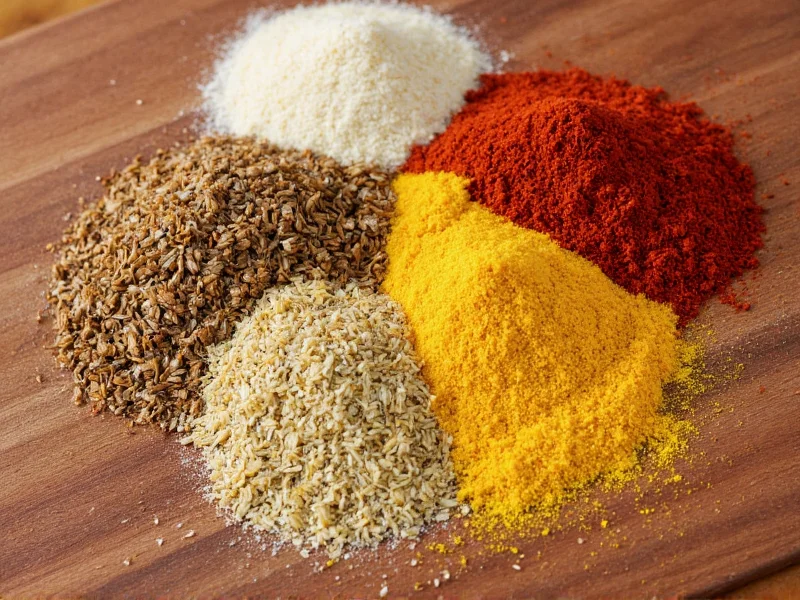Choosing the right spices transforms ordinary pasta into an exceptional dish. While many home cooks reach for generic Italian seasoning, understanding the specific spice profiles that complement different pasta types and sauces creates restaurant-quality results. This guide reveals the culinary principles behind perfect pasta seasoning, helping you move beyond basic recipes to create balanced, flavorful dishes every time.
The Science of Pasta Spice Pairing
Effective spice selection for pasta isn't random—it follows fundamental flavor principles. Starches like pasta absorb flavors well but can easily become overwhelmed. The key is understanding how different spice compounds interact with pasta's texture and the sauce's base (tomato, cream, oil, or meat).
Dried herbs release their oils slowly during cooking, making them ideal for simmering sauces. Fresh herbs, however, lose delicate volatile compounds when exposed to high heat, so they're best added at the end. This explains why recipes often call for dried oregano early in the process but fresh basil just before serving.
Essential Spices for Different Pasta Types
Not all pasta dishes benefit from the same spice profile. The shape, thickness, and sauce compatibility of each pasta type determines the ideal seasoning approach.
| Pasta Category | Recommended Spices | Application Timing |
|---|---|---|
| Long Strands (Spaghetti, Linguine) | Red pepper flakes, garlic, parsley | Add dried spices to oil first, fresh herbs at end |
| Tube Pastas (Penne, Rigatoni) | Oregano, fennel seed, black pepper | Combine with sauce ingredients before baking |
| Stuffed Pastas (Ravioli, Tortellini) | Nutmeg, white pepper, sage | Incorporate into filling, light dusting on finished dish |
| Sheet Pastas (Lasagna, Cannelloni) | Basil, thyme, rosemary | Layer dried herbs between components, fresh on top |
Regional Spice Traditions for Authentic Flavor
Italian regional cuisine offers valuable lessons for proper pasta seasoning. Northern Italian dishes favor subtle spices like nutmeg in béchamel sauces, while Southern Italian cooking embraces bold flavors with generous red pepper flakes and robust oregano.
When preparing traditional dishes, respect these regional distinctions. A proper carbonara contains only black pepper—not garlic or oregano, which would make it inauthentic. Similarly, pesto Genovese relies on fresh basil and pine nuts rather than dried herbs. Understanding these traditional Italian pasta seasoning practices prevents flavor conflicts that ruin otherwise good dishes.
Timing Techniques for Maximum Flavor Impact
When you add spices matters as much as which spices you choose. For optimal results:
- Dried spices: Add to hot oil or at the beginning of sauce preparation to allow flavors to bloom
- Fresh herbs: Stir in during the last 2-3 minutes of cooking to preserve volatile oils
- Whole spices (like bay leaves): Remove before serving to prevent overpowering bitterness
- Finishing spices (like flaky sea salt): Sprinkle just before serving for texture contrast
Many home cooks make the mistake of adding all spices at once. Instead, layering flavors creates depth. Start with garlic in olive oil, add dried oregano as tomatoes simmer, then finish with fresh basil and parsley. This technique produces the best spices for pasta dishes with professional complexity.
Avoiding Common Pasta Seasoning Mistakes
Even experienced cooks sometimes undermine their pasta dishes with these seasoning errors:
- Over-salting the cooking water: Pasta water should taste like the sea, but excess salt concentrates as water reduces in sauces
- Mixing incompatible spices: Avoid combining strong spices like cumin with delicate pasta dishes
- Using stale spices: Ground spices lose potency after 6 months—check freshness before use
- Adding fresh herbs too early: Destroys delicate flavor compounds through overcooking
Remember that how to season pasta properly requires restraint. Three well-chosen spices create better balance than a handful of random seasonings. When in doubt, start with less—you can always add more, but you can't remove excess spices.
Creating Custom Spice Blends for Pasta
Instead of relying on pre-made Italian seasoning, create your own blends tailored to specific dishes:
- Simple Tomato Sauce Blend: 2 parts dried oregano, 1 part dried basil, ½ part red pepper flakes
- Cream Sauce Enhancement: Equal parts nutmeg, white pepper, and dried parsley
- Meat Sauce Depth: 3 parts fennel seed, 2 parts dried rosemary, 1 part garlic powder
Store these blends in airtight containers away from light. Properly stored, they maintain potency for 3-4 months. This approach gives you control over spice combinations for different pasta types without unwanted additives found in commercial blends.
Seasoning Pasta Water: Beyond Basic Salt
While salt remains essential for pasta water, consider these enhancements for extra dimension:
- Add a bay leaf to the cooking water for subtle herbal notes
- Include a Parmesan rind for umami depth (remove before draining)
- Drop in a few black peppercorns for gentle warmth
These additions infuse the pasta from within, creating flavor that penetrates beyond surface seasoning. Just remember to maintain the proper salt ratio (1-2 tablespoons per gallon of water) as the foundation of balancing flavors in pasta dishes.











 浙公网安备
33010002000092号
浙公网安备
33010002000092号 浙B2-20120091-4
浙B2-20120091-4